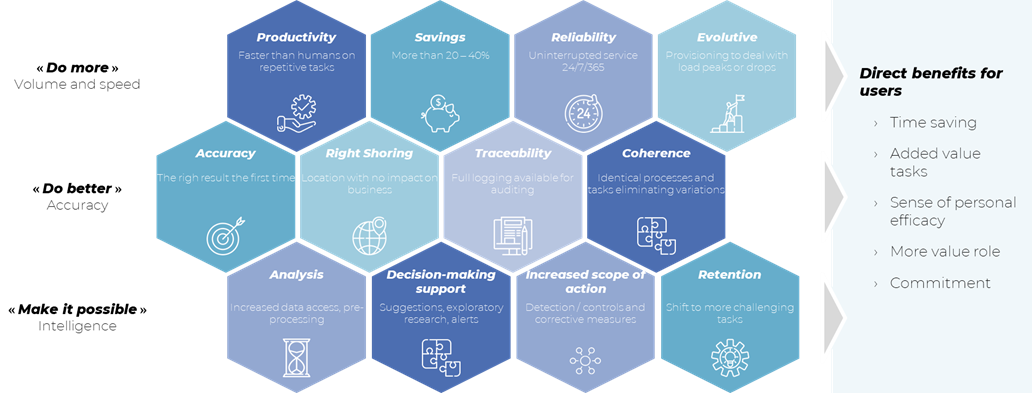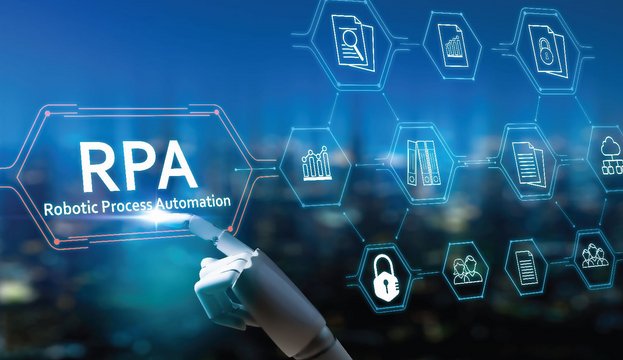Why is RPA one of the most demanded technologies by our clients, especially in this year of pandemic?
Many companies have been overwhelmed by the increase in their activities: new processes to comply with, peaks of workload tasks, remote working, etc. This being said, how is RPA helping those companies?
By Pablo Alifano, CEO, Talan in Spain
RPA is an automation process based on "virtual assistants". Specifically, it uses the user's operating system to record and reproduce his actions on the computer (PC) automatically. In short, it is a software that records and plays tasks and actions. RPA has helped us to optimise the updating of data processing and manipulation, the exchange between different computer systems as well as internal and external communication.
It is a non-intrusive technology, which means it does not have to integrate with internal systems and go through long and tedious development and testing processes. This feature significantly accelerates its implementation by aiding in processes that can be automated in a few weeks of work.
Examples of scenarios with RPA that generate a great return on investment when automated.
- Operational, transactional, repetitive processes, with few exceptions and medium/high volume (create/delete customers´ records, billing processes, search for data in different databases/systems/website, etc.) Automating these processes or a significant part of them, based on the 80/20 rule for example (Pareto), free up people's time which can be dedicated to tasks that generate greater added value, such as: analysing information, decision-making, expanding new services, etc. But also, it allows them to manage these processes within the required times frames, performing more volume in equal or less time, etc. It is also not necessary that these [tasks) are in large volumes within a single process, since the robot can work sequentially 24/7 365 days a year. This means that several processes can create the right volume to amortise the investment and generate great profits.
- Processes in which they may or may not have a lot of volume and even frequency but where avoiding errors is essential. For example, in highly regulated environments such as financial, health, etc. errors in reports, products, services, can have a high economic impact through fines and even reputational and / or legal impact.
- Processes in which a peak of activity would make it impossible to be covered manually, such as large-scale fraud, cyberattacks, etc.
The benefits of automation are abundant. Here is a slide to sum up some of them that we usually include in our presentations:

RPA: doubts and questions from our clients
How do we manage automation processes so that they are sustainable and scalable?
According to the strategy of each company, its degree of maturity in automations, etc. We can present several management models, such as centralised, decentralised or hybrid. Each one has its pros and cons and therefore, we analyse together with our clients which is the model that best suits each of them or define a tailor-made solution. Basically, in the centralised models, an Automations Centre of Excellence is created, and all these activities are centralised in that team.
Alternatively, in decentralised models each area is autonomous to perform its automations, which generates speed but possible loss of governance and greater risks if we look at the returns at the company level. Finally, hybrid models have a central team which automates more strategic processes or tasks, leaving some minor tasks decentralised in each area of the company.
Is it advisable to automate processes tactically instead of a complete reengineering?
The answer will depend on the return on investment of the project. For example, if automating the "as is" generates significant savings that can be leveraged until a comprehensive and strategic solution arrives, then the answer is yes, it is advisable to automate. Many times, we perform tedious and manual tasks waiting for the strategic solution to arrive and oftentimes, due to the different priorities and budgets available in the Technology department, these manual processes, errors, etc. are extended over time.
Is the RPA software and automation process expensive?
In my opinion, this is the easiest questions: it depends on the expected ROI.
That is why, when we are hired to perform these types of automations, we invest time at the beginning of the assignment in reviewing and gathering the processes that at first sight are candidates to be automated. Based on several variables (such as time, errors, opportunity cost, customer impact, etc.) we calculate the ROI (Return on Investment) and based on agile work schemes, we prioritise a "backlog" of automations and deliver value iteratively and incrementally in our developments.
A robot license can cost around 10k€ per year and can be used to automate processes sequentially to complete the use of a robot, 24 hours, 7 days, 365 days a year.
So, the license is paid by itself with the correct developments made, as well as the time spent on automation ranging from 2 to 4 or 6 weeks according to the complexity of the process (the latter, usually is a "one off").
Will employees be afraid of losing their jobs?
For this, I refer you to the analogy I wrote a few weeks ago called "The Pianist». At Talan, we rely on technology to accelerate digital transformation processes. At the same time, we are aware that if we do not invest on proper change management processes, there will be no technological investment that maximises the results for which it was established or worse it will never be enough.
Sensitising work teams, training them with new skills, both "hard" and "soft", keeping them connected with strategic plans, involving them etc. are fundamental for these types of processes. In a nutshell, RPAs are helping both, companies, and their employees to be more efficient, effective. Decreasing manual activities, increasing the satisfaction of both the work force and customers. Its implementation ranges from 2 to 4 or 6 weeks according to the complexity of the processes to be automated and in most cases, positive returns on investment are obtained within the same year in which they were implemented.
To carry out these processes, it is necessary to have a framework that ensures returns on investment as well as the possibility of implementing sustainable, measurable, and scalable processes.
For more information, contact us.
